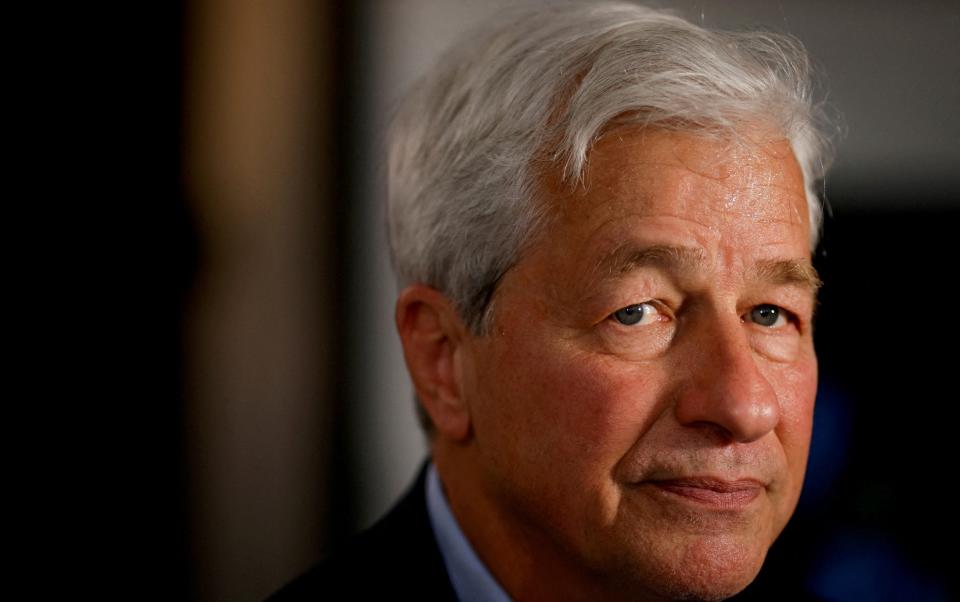Brace yourselves, the banking crisis is just getting started

If Jamie Dimon was pondering a career change as a fortune-teller, he’d be wise to stick to the day job. On the other hand, if someone of Dimon’s stature could be so wrong about the banking turmoil that continues to sweep across the US, a cynic might ask whether he was still the right person to be running one of the world’s largest financial institutions, particularly when that organisation is right at the centre of Government-led efforts to prop up the whole system.
Having ridden to the rescue of California lender First Republic over the weekend, JP Morgan’s superstar boss had a message for financial markets: its shotgun takeover of First Republic heralded the end of the crisis. He should know better than to be drawn into the realms of speculation about things he has no control of but then Wall Street is so deferential to figures like Dimon that they start to believe they can walk on water.
Still, the speed with which Dimon’s words have come back to haunt him comes as a shock. A mere 48 hours later, and it looked as though the game was up for yet another regional American bank – the fourth since the end of March.
On Wednesday, shares in PacWest plunged by as much as 60pc in after-hours trading, prompting the bank to announce that it was seeking salvation either through an emergency cash call, or, like its stricken rivals, in the arms of a bigger competitor.
The following morning, Western Alliance was forced to deny it was exploring a fire sale despite its share price plummeting 40pc at one stage. Zions Bancorp and Comerica were also under the microscope as investors continued their frantic efforts to work out where the weakest links in the financial system lie hidden.
As with those that failed before it, two things stand out with PacWest. Firstly, this is a bank that had already shored up its balance sheet by raising a $1.4bn (£1.1bn) lending facility from Apollo-backed investment firm Atlas SP Partners. And yet, that clearly wasn’t enough to assuage concerns about its true financial state.
When that failed, it resorted to old-fashioned words: “Our cash and available liquidity remains solid,” the bank said. That also fell on deaf ears. Events followed a similar pattern at Signature Bank, Silicon Valley Bank, and First Republic before all three ended up in the hands of the US banking regulator.
Dimon can take some comfort in the fact that other major names have offered similarly ill-judged and premature reassurances.
On Wednesday night it was the turn of Federal Reserve chairman, Jerome Powell. The banking system is “sound and resilient” he declared, presumably to the bewilderment of PacWest shareholders who will almost certainly be wiped out if the Federal Deposit Insurance Corporation is forced to step in again.
Powell’s soothing words seemed all the more peculiar given that its decision to raise borrowing costs again risks crystallising further material bank losses.
Still, you’d think these illustrious figures would have learned their lesson. “Americans can rest assured that our banking system is safe,” Joe Biden told the American people in March as Silicon Valley Bank unravelled. Yet the dominoes have continued to fall.
The reality is that the establishment is in no position to offer any guarantees. Such reassurances are founded on the same rigid metrics that regulators judge all big banks upon but the experience of Credit Suisse showed that those measures are far from fool-proof.
The Swiss giant met all of the strict capital requirements that were imposed on the industry after the financial crash. According to the rules, it had sufficient capital, ample liquidity, and was adequately funded but in the end it was crushed by sentiment and fear.
The problem is that once investors lose confidence, it is desperately difficult to regain, and regulators quickly become helpless bystanders. Similarly, for all the regulation that was ushered in following the financial crash of 2008, when customers take fright, bank runs are practically impossible to stop.
In an era of social media, smartphones, and online banking, the system is arguably more vulnerable than ever despite the intense scrutiny that followed the financial crash.
This is particularly true of America’s sprawling mid-tier banking sector, which has managed to escape the same oversight as its more muscular rivals after regional lenders successfully persuaded the Fed and the FDIC that they were not systemically important.
They also claimed that over-burdensome regulation would be a brake on growth and competition. Is it any wonder then that so many appear to have indulged in such reckless lending?
Meanwhile, for every optimist, it is just as easy to find a pessimistic one such as Robert Kaplan, the former president of the Dallas Federal Reserve who thinks “we’re in the early stages, not the late stages” of a banking crisis. Ditto Warren Buffett’s right-hand man Charlie Munger, who has warned that US banks are “full of” bad, yet unrealised commercial property loans.
Likewise, for every measure that supposedly demonstrates resilience, another can be found that rings alarm bells. Academics at New York University estimate unrealised US bank losses to be $1.7 trillion (£1.3 trillion), while the FDIC admits that uninsured deposits at US banks tripled to $7.7 trillion between 2009 and 2022.
Amid such fragility, a proposal to lift the deposit insurance cap from $250,000 sounds like a recipe for even more exuberance.
Evidently, the banking crisis is clearly not over. On the contrary it may just be getting started. The question everyone should be asking is how bad is it likely to get?
